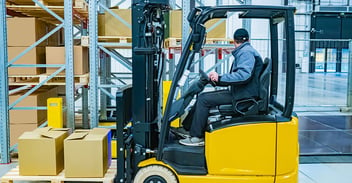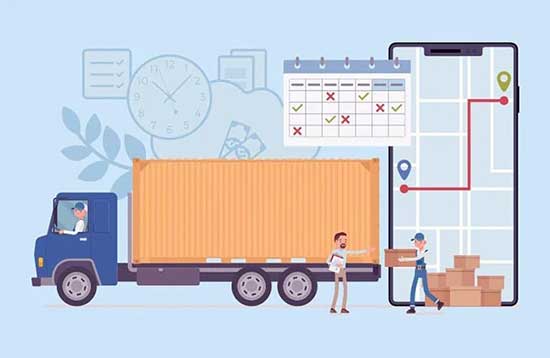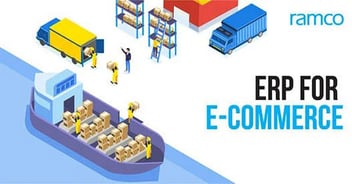

Customers today demand deliveries that are fast, flexible, and fully trackable. They expect orders to arrive on time, every time, no matter the touchpoint: app, store, or website. Meeting these expectations requires more than hustle; it demands a logistics system that orchestrates every move meticulously, syncing orders, sorting routes, and aligning carriers.
Within this framework, the transportation management system (TMS) sits at the core of any modern, smart logistics ERP. It acts as the engine, handling the complexity of fulfillment with a mix of real-time data, automation, and intelligent planning. TMS software is purpose-built to streamline the operational demands of today’s omnichannel logistics landscape.
What is Omnichannel Fulfillment and Why Is It So Complex?
Omnichannel fulfillment is the process of delivering orders, consistently and on time, across multiple touchpoints like e-commerce platforms, retail stores, pop-up shops, and marketplaces. The goal? To create a single, seamless customer experience, regardless of where the order originated.
But in today’s high-expectation environment, omnichannel isn’t just a strategy; it’s a necessity. It directly impacts a company’s most valuable intangible assets: trust and reputation.
It’s about making every click, swipe, or in-store purchase feel effortless, even when returns come into play. Juggling multiple order sources like online carts, mobile apps, and physical stores, while meeting diverse delivery modes, same-day, next-day, or standard demands precision.
A logistics system is designed to move orders smoothly from the warehouse to the doorstep. But omnichannel fulfillment brings more than volume; it brings complexity. When you add varied Service Level Agreements (SLAs) and unpredictable return flows, the logistical challenge multiplies.
This is where a transportation management system (TMS) becomes indispensable. Integrated into the broader logistics system, a TMS software coordinates every leg of the journey to keep operations efficient and customer satisfaction high.
How a Transportation Management System Powers Omnichannel Success
In omnichannel fulfillment, where orders flood in from e-commerce, retail, and pop-ups, a transportation management system (TMS) is the engine driving seamless logistics. Here’s how its core capabilities deliver.
- Dynamic Route Optimization
A transport management system auto-assigns the best routes using real-time data like traffic, weather, and delivery windows. This cuts delivery times and fuel costs, boosting efficiency for 3PLs racing against the clock.
- Carrier Selection and Management
Smart matching pairs orders with carriers based on cost, SLA compliance, and availability. The payoff? Reliable, budget-friendly deliveries that keep customers and budgets happy.
- Real-Time Shipment Tracking
With live tracking, 3PLs and customers stay in the loop on every shipment’s status. Clear visibility builds trust, turning one-time buyers into loyal clients.
- Multi-Modal Support
Managing air, sea, road, or hybrid transport? A TMS software unifies it all on one platform. Complex logistics operations become streamlined, no matter the mode.
- Order Consolidation and Load Planning
By optimizing loads across channels, a transport management system maximizes vehicle use. This slashes costs, ensuring every trip pulls its weight in a multi-channel world.
- Returns Management Integration
Reverse logistics can be a headache. A transport management system simplifies returns and exchanges, enhancing customer satisfaction while keeping processes smooth and efficient.
A modern TMS isn’t just a logistics system; it’s the backbone of omnichannel fulfillment, aligning speed, cost, and customer expectations with precision.
Why 3PLs Can’t Thrive Without a Transportation Management System
In the whirlwind of omnichannel fulfillment, third-party logistics providers (3PLs) juggle orders from e-commerce, retail, and pop-ups. A transportation management system (TMS) is the glue that holds it all together. Here’s why it’s a must-have.
- Unified Operations Across Systems
A transport management system syncs disparate warehouses, sales channels, and logistics partners into one seamless flow. No more missteps between online orders and in-store pickups. The result? Fewer errors, faster deliveries, and happier clients.
- Automation for Cost Savings
Manual planning is a drain. A TMS software automates route planning, carrier selection, and load optimization, slashing fuel and labor costs. For 3PLs, this means leaner operations without sacrificing speed or reliability.
- Visibility That Builds Trust
With TMS software, 3PLs offer branded tracking pages and customer portals. Clients and end-users get real-time updates on every shipment. Clear visibility fosters loyalty, turning one-off contracts into long-term partnerships.
- Streamlined Reverse Logistics
Returns are a growing challenge in omnichannel. A TMS simplifies reverse logistics, making returns and exchanges painless. This boosts customer satisfaction while keeping operations smooth, even when goods flow backward.
A TMS software isn’t just a piece in the logistics ERP system; it’s a lifeline for 3PLs navigating the complexities of omnichannel fulfillment, delivering efficiency, trust, and customer delight.
Conclusion: Logistics Systems Aren’t Optional Anymore
For 3PLs, mastering omnichannel logistics is no longer optional; it’s essential. A transportation management system is the linchpin, simplifying complex order flows, reducing costs, and keeping customers happy. From dynamic routing to reverse logistics, a smart logistics system like Ramco’s TMS software ensures every step runs smoothly. It’s not just about moving goods, it’s about delivering consistency, trust, and control.
Ready to simplify fulfillment? Explore how Ramco’s Transportation Management System can help 3PLs stay ahead in a multi-channel world.
Enterprise asset management (EAM) involves the management of mission critical assets of an organization throughout each asset's lifecycle. EAM is used to plan, optimize, execute, and track the needed maintenance activities with the associated priorities, skills, materials, tools, and information. The aim is to optimize the quality and utilization of assets throughout their lifecycle, increase productive uptime and reduce operational costs.
Enterprise asset management (EAM) involves the management of the maintenance of physical assets of an organization throughout each asset's lifecycle. EAM is used to plan, optimize, execute, and track the needed maintenance activities with the associated priorities, skills, materials, tools, and information.
The software helps in effective maintenance of assets through preventive, predictive, shutdown and breakdown maintenance strategies. The system also helps enterprises mitigate equipment risks by enhanced safety standards. The streamlined operations and improved asset performance helps organizations increase their investment effectiveness.
EAM is important because it helps organizations track, assess, manage and optimize asset quality and reliability. Asset intensive Organizations have hundreds, thousands, even millions of assets which needs to be maintained to maximize / optimize life of these assets to increase the return on investment.
The key features of effective EAM are:
- Work management.
- Maintenance Strategies (Preventive/ Predictive / Breakdown / Shutdown).
- Planning and scheduling.
- Supply chain management.
- Health and safety.
- Mobility.
- Analytics.
- Improved Asset Health at reduced cost through data driven maintenance Programs
- Complete visibilityon entire maintenance data across Equipment, across Models, across Branches to aid in analysis & decision making such as to Repair or Replace the Equipment
- Insightful analysis of Inspection Data to improve customer satisfaction
- Effective maintenance management enhanced by predictive maintenance and inbuilt analytics
- Increased reliability and safety, keeps complete track of all the inspections & calibration schedules
- Mobile Application enables users to execute work while “in the field” leading to minimized non-productive time and increased productivity and reduces duplication of work and human errors in recording information.
- Quick turnaround time through Actionable Notification & Alerts for every process in real time and accessible anytime and anywhere.
- Improved Regulatory Part of asset management involves the implementation of better O&M practices, which can significantly improve compliance.
Asset Intensive companies under the following Industries :
- Ports
- Cement and Mining
- Utilities
- Fleet Maintenance
- Equipment Rental
- Other Manufacturing
- Real Estate & Infrastructure
- Power Generation
Contact us for a meeting and schedule a demo
This differs on case to case basis, based on the type of installation and unique industry specific requirements. Contact us for a meeting and schedule a demo.
This differs on case to case basis, based on the type of installation and unique industry specific requirements. Contact us for a meeting and schedule a demo.
Stay Connected, follow us on LinkedIn / Twitter to know more about EAM Software latest trends.


